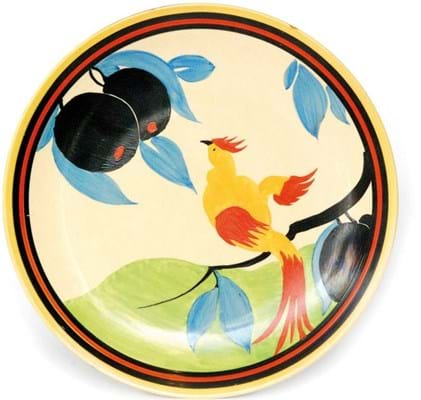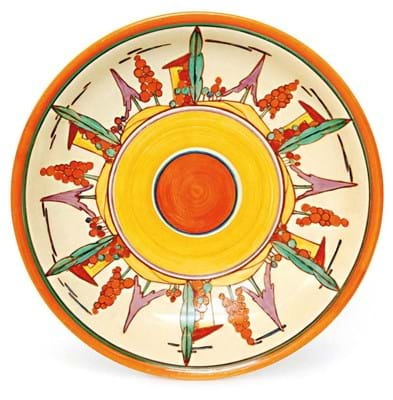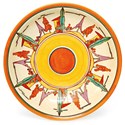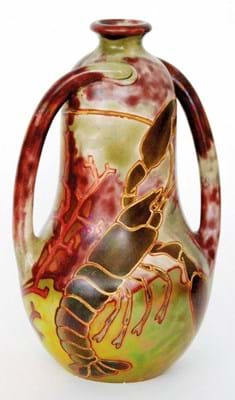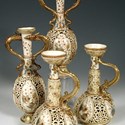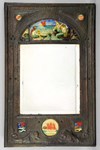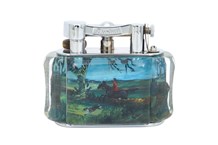The latest 995-lot sale, on October 21, encompassed most items that might be expected across this wide-ranging category but the emphasis was very much on Clarice Cliff. This section of 245 lots contributed £92,000 to the day’s £203,000 total.
Clarice is very much a private passion for Farmer as well as a commercial interest. He has followed the market since a boy in the 1980s and saw its American-driven peak in the late 1990s and its subsequent fall.
What hasn’t changed is that market-fresh rarities are the key to success. He has been aware of such a piece for four years: a c.1931 Appliqué plaque painted with a stylised bird of paradise. It was given to the New Zealand owner’s grandparents as a wedding present.
“It is extremely rare, in superb condition and I wasn’t the only auctioneer interested in it,” said Farmer. “The vendors had no idea of its value but much as I’d like to have given it a £2000-3000 estimate and seen it climb, I had to tell them it was an £8000 piece and could make more.”
Illustrated above, the plaque sold on the lower £8000 estimate.
With American bidders no longer the buying force they were, the large lotus-form ewers and plates have both slipped in popularity. But collectors are turning their enthusiasm towards vases and new enthusiasts are coming into the field.
Best of the other 20 or so four-figure sellers was a restored c.1933, 16½in (42cm) diameter wall plaque from the Fantasque range. Painted in the Trees and House pattern, it was estimated at £1000-1500 and sold at £2400.
The surprise among the ceramics at Fieldings was a Zsolnay vase.
The turn-of the century material from the factory has long commanded respect but not high prices among UK and US collectors. However, prices have accelerated with interest from Hungary.
Zsolnay in Cambridge
The mood was evident at Cheffins (23% buyer’s premium) nine days earlier at their post-1880 sale at Cambridge (see ATG No 2315).
At that sale, 60 pieces of late 19th-early 20th century Zsolnay were offered in 17 lots and all sold above estimate as two Hungarian bidders went to battle over them.
Collectively estimated at £3200- 5500, the pieces – all typical historicist wares – totalled just shy of £13,000.
The most desirable wares are those with an iridescent ‘eosin’ glaze from the early 20th century. Fieldings had two Art Nouveau vases on offer which also attracted Hungarian bidders – possibly the same two returning to the fray.
One, 6¼in (16cm) tall of tapering form with metal mounts from neck to foot and with stylised flowerhead terminals, took £400 against a £150-250 estimate.
The other was a 10in (25cm) twin-handled vase bearing the five churches mark and decorated to one side with a lobster and with coral to the reverse.
Illustrated here, it had suffered some damage and was estimated at £250-300 but sold at £4900.
“Collectors of different ceramics react differently to damage,” observed Farmer. “You’re never too old to learn, and what I learnt from this sale was that Hungarians put much less weight on the condition of Zsolnay than on the look and rarity of an object.”


